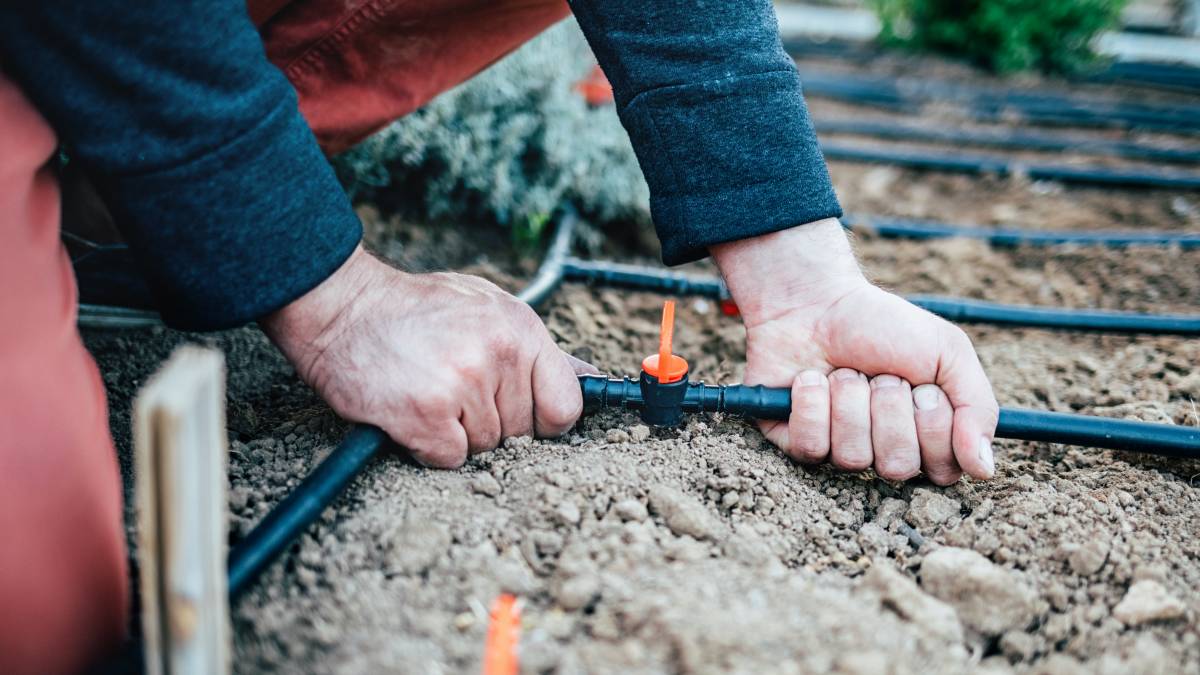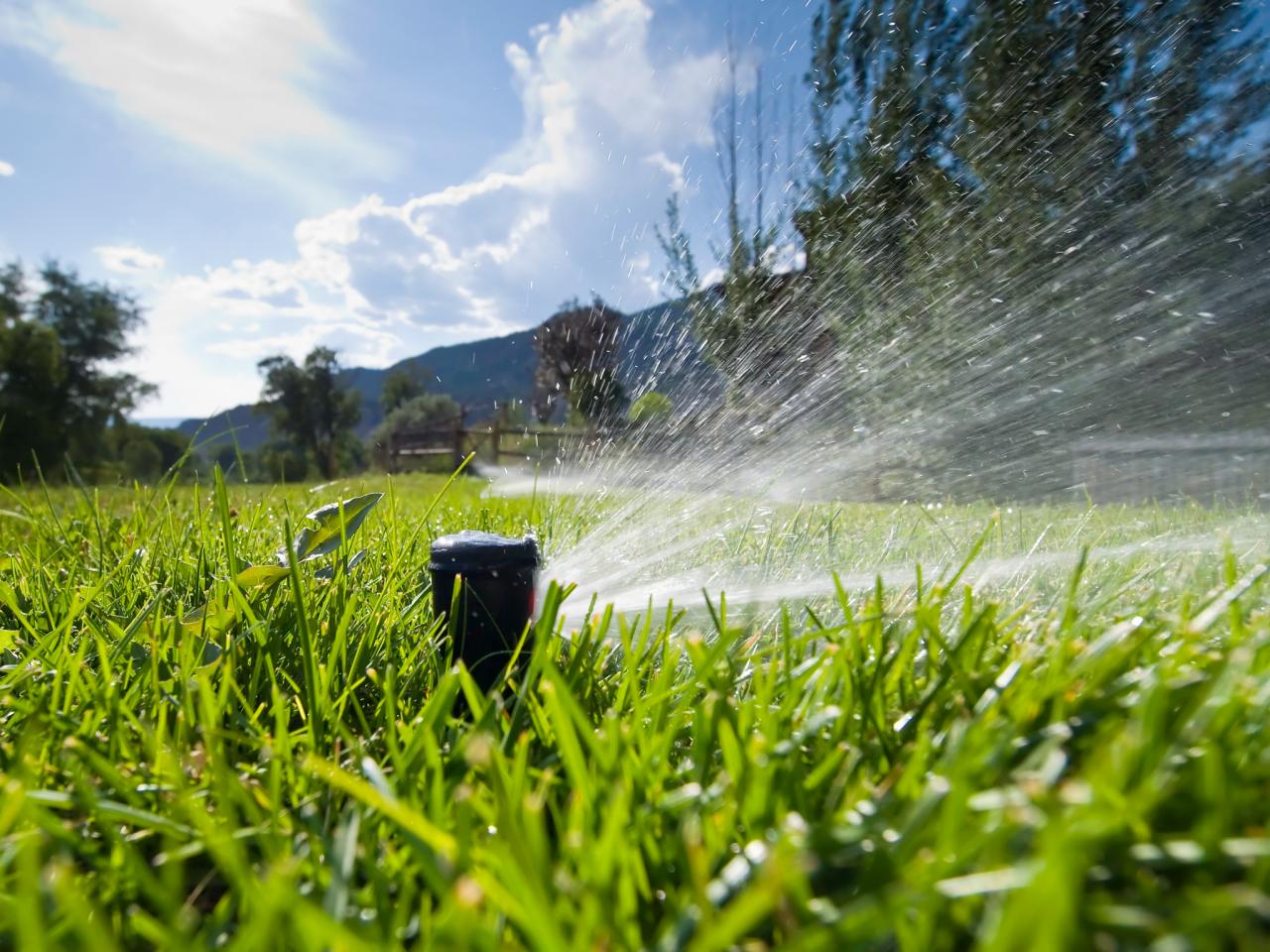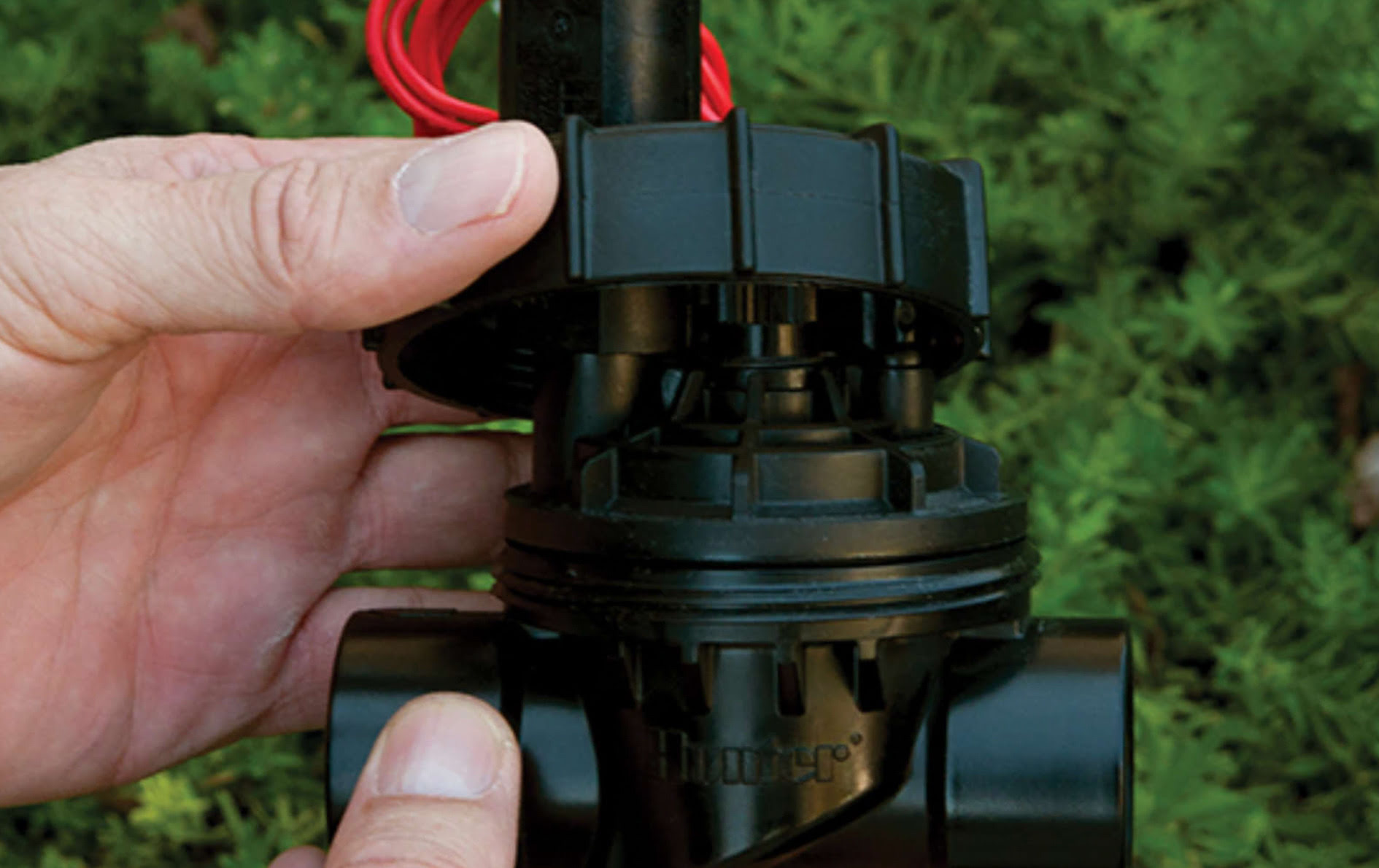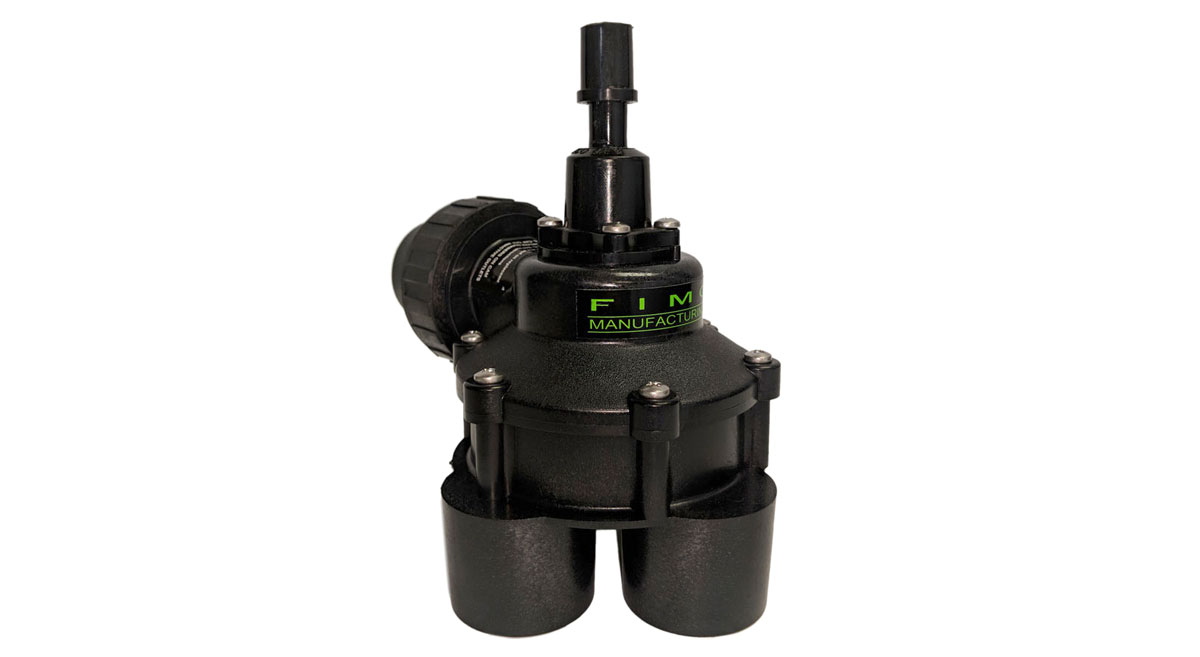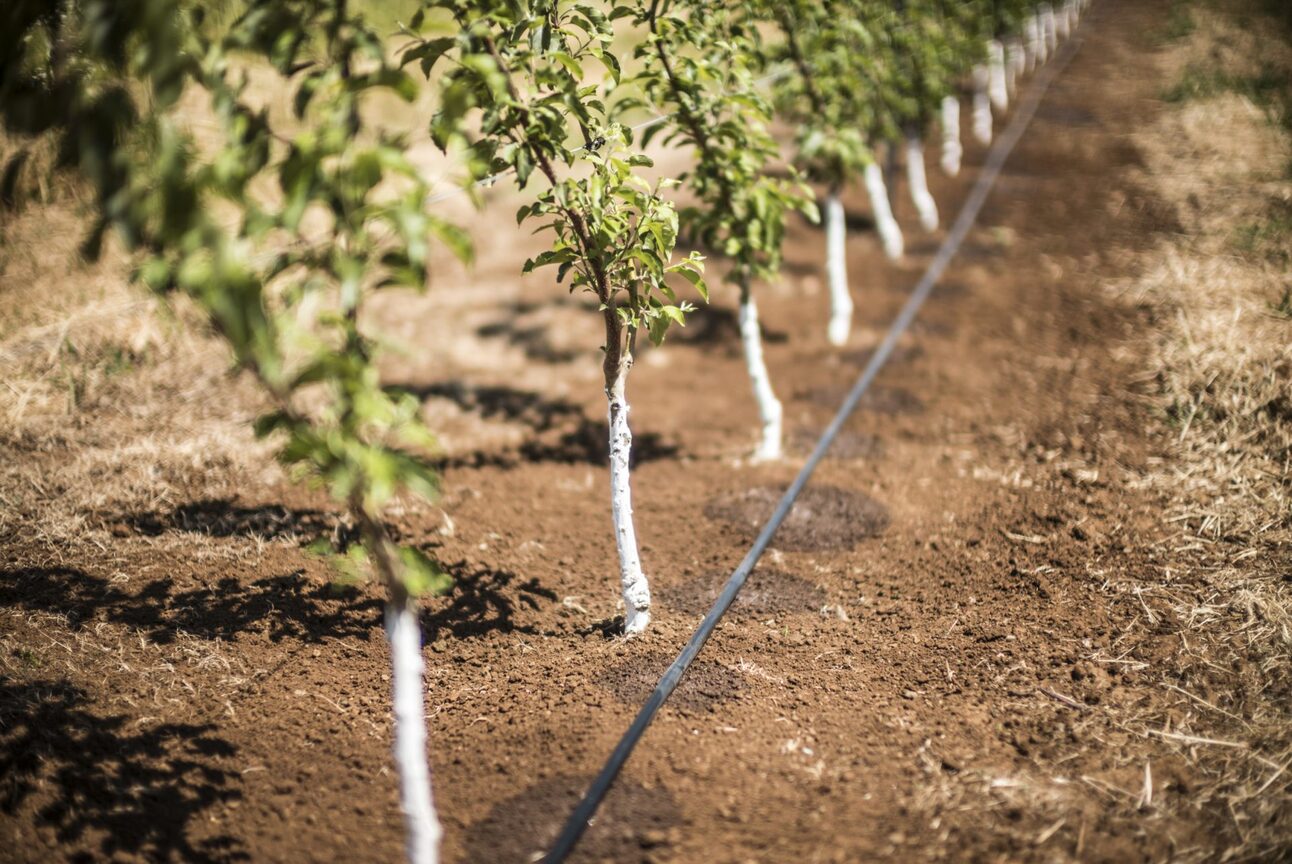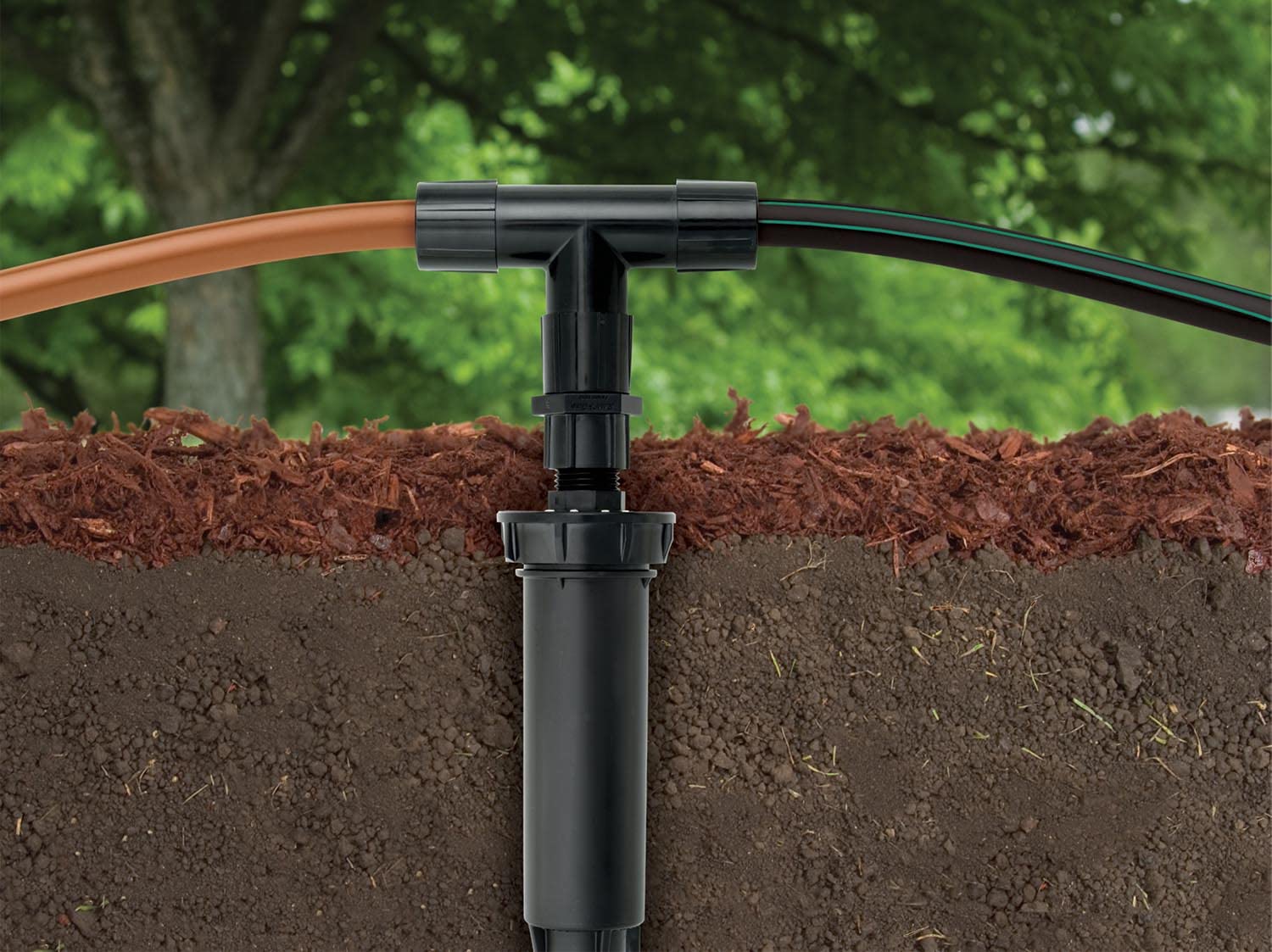Home>Gardening Techniques>DIY Projects>How To Install Irrigation Backflow Valve


DIY Projects
How To Install Irrigation Backflow Valve
Modified: January 22, 2024
Learn how to install an irrigation backflow valve with this DIY project guide. Ensure the safety of your water supply with step-by-step instructions.
(Many of the links in this article redirect to a specific reviewed product. Your purchase of these products through affiliate links helps to generate commission for Chicagolandgardening.com, at no extra cost. Learn more)
Table of Contents
Introduction
Welcome to this comprehensive guide on installing an irrigation backflow valve! If you’re a DIY enthusiast or a homeowner looking to tackle your irrigation system project, understanding the importance of a backflow valve and how to properly install one is essential.
An irrigation backflow valve plays a vital role in preventing contaminated water from flowing back into the main water supply. It’s a critical component that ensures the safety and integrity of your potable water. By having a backflow valve in place, you can protect yourself and your community from potential health hazards.
This guide will provide you with step-by-step instructions on installing an irrigation backflow valve. Whether you’re updating an existing system or starting from scratch, we’ll walk you through the process and give you practical tips to ensure a successful installation.
Before we dive into the installation process, let’s take a moment to go over the tools and materials you’ll need to have on hand. By gathering everything you need in advance, you can streamline the installation and avoid unnecessary trips to the hardware store.
Understanding the Importance of an Irrigation Backflow Valve
When it comes to irrigation systems, it’s essential to prioritize the safety and cleanliness of our water supply. This is where an irrigation backflow valve comes into play. But what does it do exactly, and why is it so important?
First and foremost, an irrigation backflow valve is designed to prevent the reverse flow of water within your irrigation system. This means that it stops the water used for irrigation from flowing backward into the main water supply. Without a backflow valve, there is a risk of potentially contaminated water, such as fertilizers, pesticides, or other chemicals, seeping back into the community’s drinking water.
The potential health hazards posed by contaminated water cannot be overstated. Ingesting or coming into contact with these substances can have serious consequences for our health and well-being. By installing an irrigation backflow valve, you are taking a proactive step to protect your household and your community from potential contamination.
Furthermore, many municipalities and local building codes require the installation of backflow prevention devices for irrigation systems. This is to ensure compliance with health and safety regulations and to maintain the integrity of the public water supply.
By having an irrigation backflow valve, you are not only ensuring the safety of your water but also avoiding any potential legal issues and penalties that may arise from non-compliance.
The two most common types of irrigation backflow valves are atmospheric vacuum breakers (AVB) and pressure vacuum breakers (PVB). AVBs are typically used in residential settings and provide protection against backflow through a mechanism that allows air to enter the system when pressure drops. PVBs, on the other hand, are recommended for larger systems and provide a higher level of protection by creating a physical barrier between the irrigation water and the potable water supply.
Understanding the importance of an irrigation backflow valve is the first step towards ensuring the safety and integrity of your water supply. In the following sections, we will guide you through the installation process, equipping you with the knowledge and skills needed to protect yourself, your family, and your community.
Tools and Materials Needed for Installation
Before you embark on installing an irrigation backflow valve, it’s essential to gather all the necessary tools and materials. Having everything on hand will save you time and ensure a smooth installation process. Here are the items you’ll need:
- Irrigation backflow valve: Choose the appropriate type (atmospheric vacuum breaker or pressure vacuum breaker) based on your system’s needs and local regulations.
- Pipe cutter: Used to cut the existing irrigation pipe to accommodate the installation of the backflow valve.
- Teflon tape: Provides a secure seal between threaded connections to prevent leakage.
- PVC primer and cement: Required for joining PVC pipes and fittings. Ensure you have the correct type for your irrigation system.
- Adjustable wrench: Used for tightening and loosening nuts and fittings.
- Trenching shovel: Required if you need to create a trench for the installation.
- Pipe fittings: Depending on the configuration of your irrigation system, you may need additional fittings such as couplers, elbows, and tees.
- Teflon plumbers tape: Used to secure threaded connections.
- Measuring tape: Helpful for ensuring accurate measurements during the installation process.
- Marker or pencil: Used to mark the cutting points on the irrigation pipe.
- Safety goggles and gloves: Important for protecting your eyes and hands during the installation process.
It’s also a good idea to have a bucket or container nearby to catch any water that may drain from the irrigation system when you disconnect pipes.
Before you start the installation, make sure to double-check with your local building codes or irrigation guidelines to ensure that you have all the necessary materials and that your installation will meet the required standards.
By gathering these tools and materials in advance, you’ll be well-prepared to tackle the installation of your irrigation backflow valve and ensure the safety and integrity of your water supply.
Step-by-Step Guide on Installing an Irrigation Backflow Valve
Now that you have your tools and materials ready, let’s dive into the step-by-step process of installing an irrigation backflow valve. Follow these instructions carefully to ensure a successful installation:
- Locate the optimal position for the backflow valve installation. Choose a spot that is easily accessible and complies with local regulations regarding distance from potential contaminant sources.
- Turn off the main water supply to your irrigation system. This may involve shutting off the main valve or using the control panel for an automated system.
- If needed, use a trenching shovel to dig a trench that will accommodate the new backflow valve. The depth of the trench will vary depending on local codes and the depth required to protect against freezing.
- Using a pipe cutter, carefully cut the irrigation pipe at the desired location where the backflow valve will be installed. Ensure that the cut ends are clean and free from debris.
- Apply PVC primer to the outside of the cut pipe end and the inside of the backflow valve fitting. Follow the manufacturer”s instructions for proper application.
- Apply PVC cement to the primed areas and quickly push the backflow valve fitting onto the pipe end. Hold the fitting in place for a few seconds to allow the cement to bond.
- If necessary, install additional PVC pipe fittings to connect the backflow valve to the irrigation system. Use primer and cement to ensure secure connections.
- Wrap threaded connections with Teflon tape to create a tight seal. Start at the end of the male threads and wrap in a clockwise direction, overlapping the tape as you go.
- Attach the appropriate fittings to the backflow valve for the incoming and outgoing irrigation pipes. Again, use Teflon tape to secure the connections.
- Turn on the main water supply to the irrigation system and check for any leaks around the backflow valve and the connected pipes. If there are any leaks, tighten the fittings or apply additional Teflon tape as necessary.
Remember to follow local codes and guidelines during the installation process to ensure compliance and safety. It’s also a good idea to consult manufacturer instructions specific to your backflow valve model for any additional installation requirements.
Once you have successfully installed the backflow valve, you can proceed to test and adjust it to ensure proper functionality, which we will cover in the next section.
Testing and Adjusting the Backflow Valve
After installing the irrigation backflow valve, it’s crucial to test and adjust it to ensure that it is functioning properly. This will help to guarantee the safety and integrity of your water supply. Follow these steps to test and adjust your backflow valve:
- Turn on the main water supply to your irrigation system.
- Check the backflow valve for any visible leaks or signs of malfunctioning. Pay close attention to the fittings, connections, and valves.
- Observe the pressure in your irrigation system. The water should be flowing evenly and smoothly through the sprinklers or emitters. If there are any irregularities or significant drops in pressure, it may indicate a problem with the backflow valve.
- Inspect the backflow valve’s test cocks or ports. These allow you to test the functionality and performance of the valve. Use a test kit or gauge to measure the pressure differential across the backflow valve.
- Refer to the manufacturer’s instructions to determine the optimal pressure differential for your specific backflow valve model.
- If the pressure differential is within the acceptable range, your backflow valve is functioning correctly. If not, adjustments may be necessary.
- Adjust the backflow valve as needed to achieve the proper pressure differential. This can usually be done by using the adjustment screws or knobs provided with the valve.
- Once you have made the necessary adjustments, retest the backflow valve to ensure that it is functioning properly.
It’s important to note that backflow valves should be tested and adjusted regularly to ensure ongoing performance. This is especially crucial if your irrigation system is subject to changes, such as modifications or expansions.
If you are unsure about how to properly test and adjust your backflow valve, it’s highly recommended to consult with a professional or a certified backflow specialist who can ensure that your system is operating safely and efficiently.
By taking the time to test and adjust your backflow valve, you can have peace of mind knowing that your irrigation system is protecting your household, community, and water supply from potential contamination.
Maintenance Tips for Irrigation Backflow Valves
Proper maintenance of your irrigation backflow valve is crucial to ensure its continued functionality and effectiveness in protecting your water supply. Following these maintenance tips will help keep your backflow valve in optimal condition:
- Regularly inspect the backflow valve for any visible damage or signs of wear and tear. Look for leaks, cracks, or corrosion on the valve body and fittings. If you notice any issues, address them promptly to prevent further damage.
- Keep the area around the backflow valve clean and free from debris. Remove any vegetation, dirt, or obstructions that may impede its proper functioning or accessibility.
- During the winter months, take precautions to protect the backflow valve from freezing. Insulate exposed pipes and valves, or consider temporarily removing and storing the valve in a frost-free location.
- Test the backflow valve regularly to ensure its proper operation. Follow the manufacturer’s recommended testing frequency and guidelines. If you are unsure of how to conduct the test, consult a professional or a certified backflow specialist.
- If your backflow valve has test cocks or ports, flush them regularly to remove any debris or sediment buildup that may affect the valve’s performance. Use caution and follow proper safety procedures when performing this task.
- If you notice a decrease in water pressure or irregularities in your irrigation system’s performance, check the backflow valve for any obstructions or blockages. Clear any debris and ensure that the valve is fully open and functioning correctly.
- Stay informed about any changes in local regulations or requirements regarding backflow prevention devices. Stay up to date with any required inspections or certifications to ensure compliance with current standards.
- If you are unsure about any aspect of backflow valve maintenance or encounter complex issues, it is recommended to seek the assistance of a professional or a certified backflow specialist.
Maintaining your irrigation backflow valve is essential for the long-term functionality and reliability of your system. Regular inspections, cleaning, and testing will help identify any potential problems and ensure that your backflow valve continues to safeguard your water supply effectively.
By incorporating these maintenance tips into your routine, you can enjoy peace of mind knowing that your irrigation system is operating safely, efficiently, and in compliance with regulations.
Conclusion
Installing an irrigation backflow valve is a crucial step in ensuring the safety and integrity of your water supply. By preventing the reverse flow of potentially contaminated water, a backflow valve plays a vital role in protecting your household and community from health hazards. It’s also essential for complying with local regulations and building codes.
In this comprehensive guide, we have covered everything you need to know about installing an irrigation backflow valve. From understanding its importance to gathering the necessary tools and materials, and following a step-by-step installation method, we have provided you with the knowledge and guidance to successfully complete the installation.
We have also discussed the importance of testing and adjusting the backflow valve to ensure its proper functionality. Regular maintenance, including inspections and cleaning, is crucial for keeping the backflow valve in optimal condition and preventing any potential issues.
Remember, safety should always be a top priority when working with any water supply system. If you’re uncertain or uncomfortable with any aspect of the installation or maintenance processes, it’s best to consult with a professional or a certified backflow specialist who can provide expert guidance.
By taking the time to properly install and maintain your irrigation backflow valve, you can have peace of mind knowing that you are safeguarding your water supply and protecting the health and well-being of your household and community.
